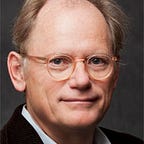Secrets of Leonardo’s Last Supper
Leonardo da Vinci’s Last Supper is unquestionably the most famous religious painting in the world. Which begs the question: why? What makes this fresco so special? After all, artists had depicted the Last Supper — Jesus’ last meal with his Apostles before his arrest on the Mount of Olives in Jerusalem — for centuries. What made this painting unique?
The answer is more complicated than you might think, but one thing is clear: the painting has an emotional power than continues to resonate with us in modern times, despite the fact that some eighty percent (80%!) of the painting is effectively destroyed. But that’s a story for another day.
The Last Supper motif was very popular with artists in Tuscany and Italy altogether. This popularity can be traced back to the 12th century and the growth of urban monastic orders throughout Europe, fueled by the growing prosperity of European cities due to international trade. Monastic orders had traditionally been of the cenobic variety, whereby monks sought solitude in the desert or other remote places. But the rapid growth of cities, with its attendant widening gap between rich and poor, demanded that monks focus on the urgent need of urban populations — not only in terms of food and health care, but also in the need for a modicum of schooling.
Since many of these monasteries were supported by local patrons — such Duke Ludovico Sforza of Milan, patron of the Dominican convent of Santa Maria delle Grazie — their convents could become quite large. This required the development of a large hall, known as a refectory, where all the monks could take their meals together. Since this hall was, after the church, the largest facility of the monastery, it required decoration. Many convents chose the Last Supper as the most obvious motif. It would give the monks the impression that they were dining with Christ and the Apostles.
Throughout the 15th century, many renowned artists painted such Last Suppers in and around Florence, including Ghirlandaio and Castagno. The use of this theme in convent dining halls became so common that, over time, the Last Supper motif became known as the cenacolo — literally, the “refectory.” Typically, these paintings show Christ at the moment where he breaks bread, thus instituting the most hallowed sacrament in Christianity: the Eucharist (based on the Greek word eucharistia, which means ‘thanksgiving.’) It was by virtue of this sacrament that the faithful would be allowed to be in communion with God every time they attended Mass.
The problem with this motif from a purely artistic perspective, however, is that it gives the Apostles very little to do. They are mere observers, looking on as Jesus breaks the bread, saying, “take, this is my body” (Mark 14:23). As a result, Gothic and early Renaissance depictions of the Last Supper look like tableaux, like staged set pieces, with very little movement or emotional drama. Inevitably, the Apostles are cast in various poses of contemplation. Some observe the actions of Christ in awe, whereas others raise their eyes heavenward, or mutter to those seated closest to them — not the best ingredients for a painting that seeks to elicit a strong emotional response. But seeking such a response was what the Dominican Order, the Church’s intellectuals and guardians of its religious orthodoxy, was all about.
This, then, was the challenge that Leonardo confronted when contemplating his fresco for the convent of Santa Maria delle Grazie: how to develop a new and innovative solution to the problems that Ghirlandaio, Castagno, and countless other artists had faced, while still remaining true to the iconographic conventions of the subject, as his Dominican clients expected him to do. How could he create a composition that not only conveyed the principal story and message, but also engaged the beholder on a deeply emotional level?
The solution was a brilliant one: Leonardo decided not to depict the Eucharist at all. Instead, he picked the dramatic moment in the Gospel of John, when Jesus announces that one among his Apostles will betray him (John 13:21–27). That news explodes outwards from the center of the composition like a veritable tsunami, prompting the men around Christ to erupt in shocked or indignant denials and debate. This idea, which is such a radical departure from the traditional depiction of the Last Supper, would give Leonardo the opportunity to do what he had first attempted with his early work of The Adoration of the Magi: to depict the full repertoire of human emotions in response to the message of Christ.
As we argue in our book Young Leonardo, the result is a cinematic work in the truest sense of the word, with each actor performing his assigned role in the ensemble, and with the entire scene projected on a vast monumental screen, larger than life. I think that’s why this painting has always made a deep impact, and why it still resonates with us today. For example, those seated closest to Jesus recoil visibly, stunned by the suggestion that there could be a traitor in their midst. As they lean backward, they also effectively distance themselves from the taint of betrayal, leaving Christ isolated and abandoned in the center of the composition. It is this deeply emotional dramatization that made Leonardo’s masterpiece the greatest work of the 15th century — and one that would launch the era of the High Renaissance.
